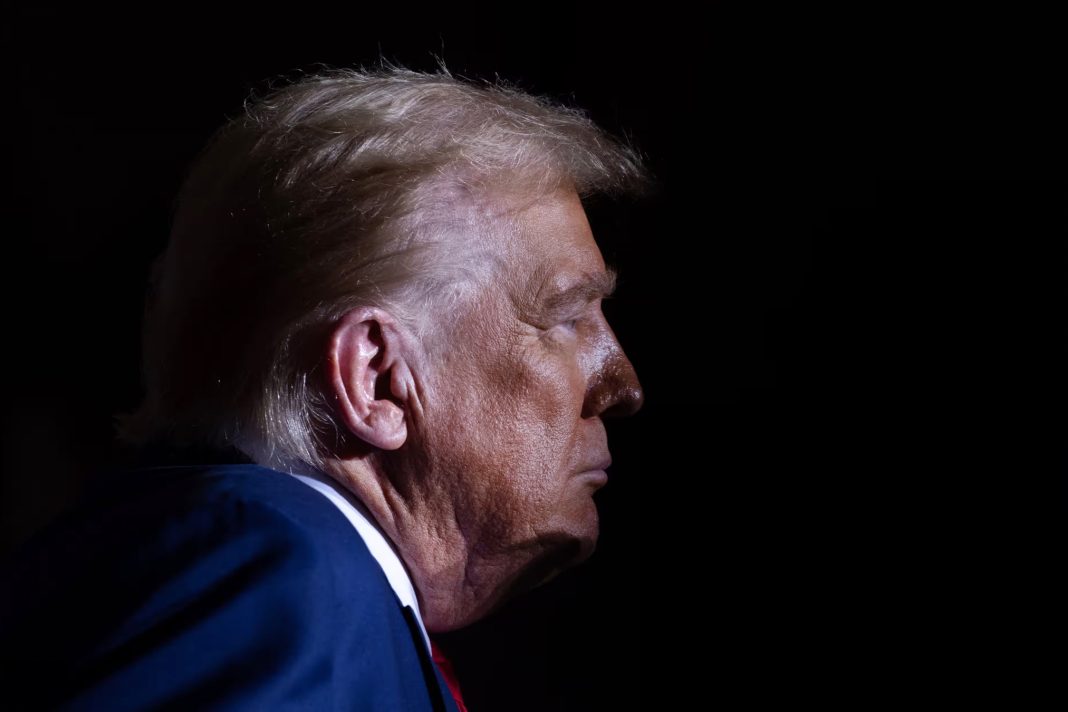WASHINGTON DC, USA – With Donald Trump set to re-enter the White House, his aggressive rhetoric against the media has raised serious concerns among press freedom advocates, as he vows to target journalists, revoke licenses, and initiate lawsuits.
Drawing comparisons to authoritarian regimes in Europe, experts warn that a second term could pose unprecedented risks to free journalism in the United States.
During his previous presidency, Trump labelled the press the “enemy of the people” and barred journalists from certain briefings.
Now, following a campaign laced with violent rhetoric toward the media, Trump’s comments have left many fearing a systematic effort to undermine independent journalism.
Escalating Hostility Toward the Media
In recent weeks, Trump has ramped up his criticism of the media, going so far as to tell a rally crowd that he “wouldn’t mind” if journalists were shot, prompting concerns of an emboldened attack on press freedom.
Sharon Moshavi, president of the International Center for Journalists, draws parallels to regimes in Hungary and Russia, where “death by a thousand cuts” tactics — including legal pressure, ownership manipulation, and intimidation — have dismantled free press institutions.
“These governments don’t just jail journalists outright; they make their jobs untenable by applying pressure from multiple angles,” Moshavi said.
In Hungary, Prime Minister Viktor Orbán and his allies acquired independent media outlets, converting them into pro-government entities.
Applebaum, a staff writer at The Atlantic, notes that “it’s not always about shutting down newsrooms. It’s about influence, and even self-censorship, as owners toe the line to maintain access.”
The Economic Leverage: Weaponising Ownership
The ICC report emphasises the threat to free media posed by business owners and corporations that, to maintain ties with the government, may apply self-censorship.
Olga Kamenchuk, a professor at Northwestern University, highlighted recent decisions by billionaire owners of the Washington Post and the Los Angeles Times to halt planned endorsements for Vice President Kamala Harris as a prime example.
Though both publications deny external influence, Kamenchuk believes it signals an emerging climate of caution.
“Many media owners are thinking about how to secure access in the coming years,” she said, adding that such decisions contribute to a dimming of democracy.
Drawing on examples from Poland, Anna Wójcik of Kozminski University noted that Orbán’s allies, through centralised ownership, control much of Hungary’s media landscape.
The Rise of “Media Capture” and “Fake News” Attacks
Under Orbán, the Central European Press and Media Foundation (KESMA) consolidated over 500 pro-government outlets.
The result has been a media landscape dominated by state-friendly voices, effectively reducing independent journalism to a whisper.
Legal actions and costly defamation cases are also common tactics to drain resources from media organisations.
Wójcik says that “harassment and intimidation” are often used to deter investigative reporters, while resources are drained through protracted legal battles.
These tactics resemble Trump’s own initiatives: last month, he sued CBS over an interview with Kamala Harris, demanding $10 billion in damages.
Even if unsuccessful, lawsuits like these are costly for media outlets.
The ACLU and other watchdogs worry that such tactics will be used to weaken media companies financially, limiting their capacity to report freely.
Lessons from Russia: Indirect Censorship through “Oligarch Friends”
Russian journalist Mikhail Zygar explains that Putin’s dismantling of Russia’s free press was executed through financial pressure rather than direct censorship.
In his newsletter, The Last Pioneer, Zygar notes that Putin simply “got help from oligarch friends” to buy out independent outlets, converting them to government-friendly news sources.
A similar model could emerge in the US, experts warn, particularly as Trump has a network of wealthy allies with vested interests in amplifying pro-government narratives.
This approach is not about overtly shuttering newsrooms, Zygar explains, but about taking advantage of the economic vulnerabilities in the media landscape to control information flow.
Can American Institutions Hold Firm?
Although Trump’s return raises concerns, some experts express cautious optimism that US institutions will withstand his attacks.
Anne Applebaum notes that the American media landscape is vast and diverse, making it harder to centralise control as quickly as in smaller countries like Hungary. Nonetheless, the economic model for news organisations remains fragile.
“The business model for media is increasingly strained, and this administration could exploit that,” Applebaum said.
Professor Kamenchuk also emphasises the resilience of democratic institutions in the US, asserting that laws designed to limit executive overreach could temper Trump’s ability to take decisive action against the press.
“I’m moderately optimistic that the democratic levers in the US won’t allow the press to be as severely limited,” she said. “But these will likely not be easy years for American journalism.”
Lasting Impact of “Fake News” Rhetoric
While Trump’s legal and economic strategies may be disruptive, experts like Moshavi argue that his most enduring damage could come from his public disdain for the media.
The “fake news” label, popularised by Trump, has already eroded trust in independent journalism among his supporters.
“This climate of distrust and animosity toward the media has a long-lasting impact,” Moshavi observed.
“The challenge goes beyond lawsuits and regulatory threats. It’s a cultural shift against the legitimacy of journalism itself.”
As Trump’s administration takes shape, journalists and press freedom advocates are preparing for what may be a challenging chapter for American media.
With legal and financial pressures looming, combined with a growing culture of mistrust, the US press faces a crucial test.







